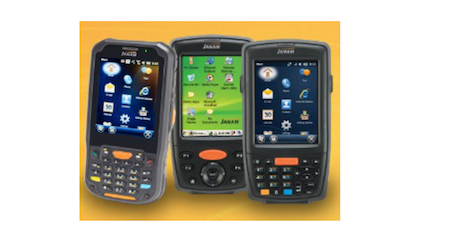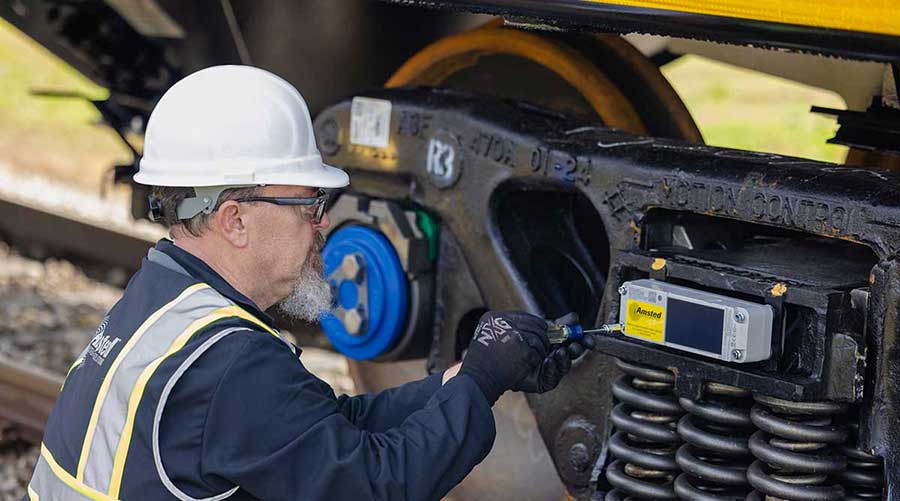Stay updated on news, articles and information for the rail industry
September 2016
Rail News: Rail Industry Trends
Perspective: RFID's Significance for U.S. Rail Safety and Efficiency

By Harry B Lerner, CEO, Janam Technologies LLC
The U.S. rail industry is entering a renaissance. Thanks to increases in vehicle and part imports — the largest commodity carried by rail — and improved delivery speeds, rail freight has seen tremendous growth in recent years. Rail freight also boasts the ability to travel up to 500 miles on a single gallon of fuel, boosting its cost-effective merits. The industry saw a 6 percent increase in the value of commodities shipped between 2015 and 2016, the largest increase of any mode of transportation.
Key to maintaining rail freight’s cost-effectiveness is the use of small crews. Over the years, rail has come to rely on crews as small as a single person to manage a train with as many as 100 or 200 cars, spanning as long as two miles. Public, industry and federal debates rage on as to whether the Federal Rail Administration (FRA) should mandate a minimum, two-person crew, but with freight trains as long and vital as they are, it’s no small job even for two people. Furthermore, rail groups argue that railroads are investing in safety equipment — like an expected $14 billion in a computerized collision avoidance safety system — that would render the minimum crew unnecessary.
Small crews make freight management an issue of both efficiency and public safety. In the absence of a collision avoidance safety system, it’s important that already-overworked freight workers remain as alert and unflustered as possible (freight workers cite the top three rail safety concerns as fatigue, fatigue and fatigue). Even with a system in place, efficiency is key to keeping deliveries timely and cost-effective.
Amid this industry turmoil, RFID readers emerge as a pivotal, game-changing technology. Easier freight maintenance means more efficient crews, timely deliveries, and most important, less-fatigued, more-focused railway operators, crucial in the next three to five years while emerging safety technologies have yet to be implemented.
Janam’s XM2-RFID for Rail mobile computer could be that game-changer. At a mere 13 ounces, the device is far smaller and lighter than any competitive device. It is also specifically designed to read the AEI RFID tags required on all North American railcars, allowing rail and intermodal companies to track and monitor equipment effectively. The XM2-RFID for Rail reads AEI tags from at least one meter (3.3 feet) away and still retains half of its battery charge after five hours of continuous use and more than 40,000 tag reads.
Since it’s comfortable to use for hours at a time, the XM2-RFID’s lightweight, ergonomic design means less fatigue for rail workers who use it. The small form factor is also driving innovative ways to manage railcars. Historically, a worker would need to walk the yard in order to track each car. This is time-consuming and costly. Now we are seeing partners like Softrail experimenting with drones. The XM2-RFID for Rail is hooked up to a drone that flies along the length of the parked train — reducing the time associated with walking the tracks in search of missing rail cars.
The XM2-RFID for Rail comes equipped with a user-addressable compass for use with transportation applications, brilliant 3.2-inch color display, 2D imager for robust decoding of the hardest-to-read barcodes and support for Microsoft’s Windows Embedded Handheld 6.5 operating system. Its size, battery life, tag reading performance, computing power and price point are enormous improvements over what’s available in the market, boosting efficiency at every level for crews big and small.
The rail industry is facing both serious growth and serious questions. RFID reading technology could prove to be the pivotal piece of the puzzle determining the industry’s direction in terms of safety and efficiency. As industry regulations and safety technology transition, rail workers must be equipped with technology that allows them to do their jobs as efficiently as possible, so they can keep trains and the freight they carry on track.
Harry B Lerner is CEO of Janam Technologies LLC, a maker of rugged mobile computers that scan barcodes and communicate wirelessly. Janam combines deep industry knowledge with advanced technologies to deliver products that are purpose-built for extended use in demanding environments such as rail.
Keywords
Browse articles on Janam Janam Technologies LLC RFID mobile rugged computer freight managementContact Progressive Railroading editorial staff.


 2025 MOW Spending Report: Passenger-rail programs
2025 MOW Spending Report: Passenger-rail programs
 Gardner steps down as Amtrak CEO
Gardner steps down as Amtrak CEO
 Guest comment: Oliver Wyman’s David Hunt
Guest comment: Oliver Wyman’s David Hunt
 Women of Influence in Rail eBook
Women of Influence in Rail eBook
 railPrime
railPrime





